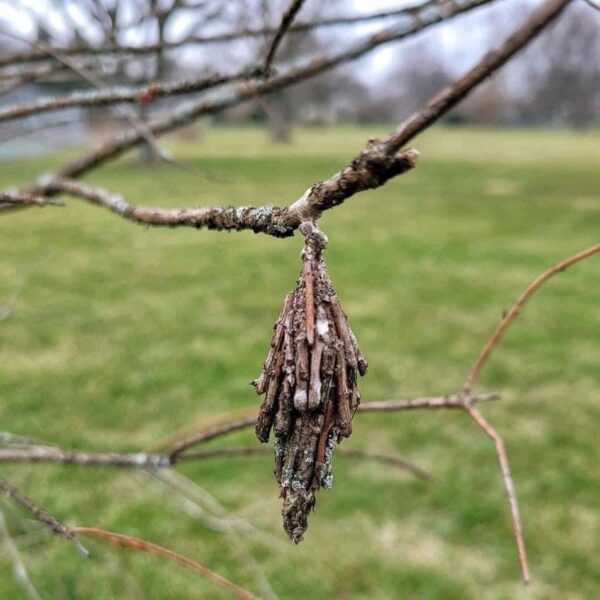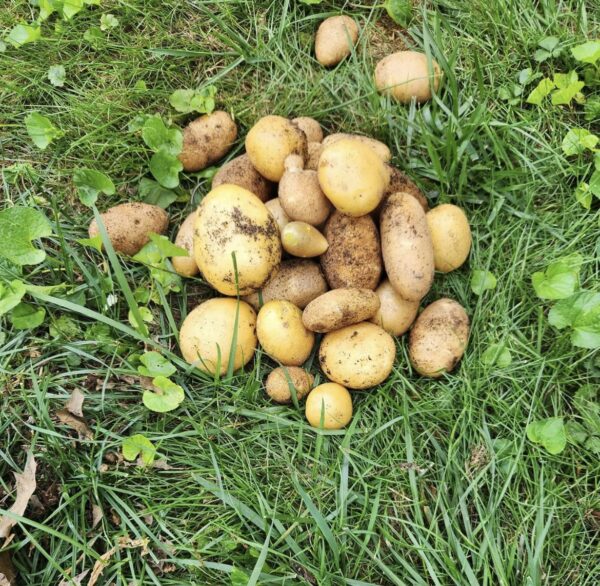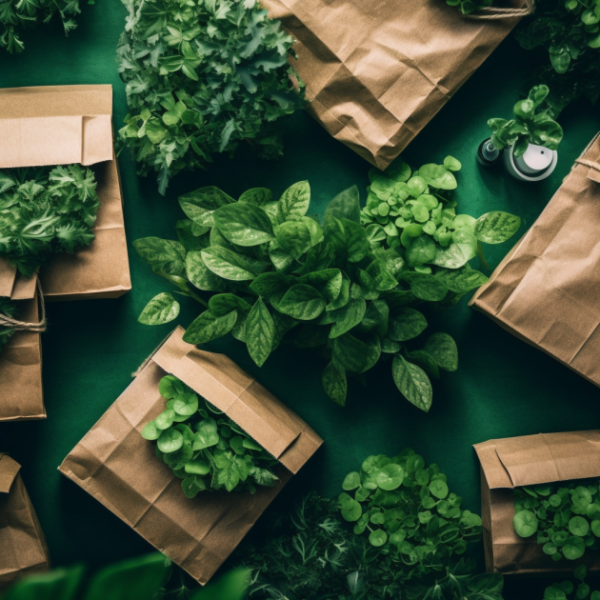As the chill of winter begins to thaw and the first signs of spring emerge, gardeners and homeowners alike turn their attention to the awakening beauty of their landscapes. Trees, central to many gardens, not only offer shade and beauty but also serve as vital ecosystems for birds and other wildlife. However, lurking among the branches, a hidden danger threatens the health and vitality of these majestic beings: bagworm cocoons.

Understanding Bagworms
Bagworms are not your typical garden pests. These caterpillars from the family Psychidae spend their larval stage feasting on the leaves of trees, encased in protective cocoons that they craft from silk and plant material. As innocuous as they may seem, hidden within these cocoons lies a threat capable of causing significant damage to trees. Each cocoon harbors hundreds of eggs, poised to hatch into leaf-devouring larvae come spring.
The Risk They Pose to Trees
The appetite of bagworm larvae is voracious. They are particularly fond of evergreens, such as cedar, juniper, and pine, where their feeding frenzy can lead to severe defoliation and, in extreme cases, the death of the tree. However, their palate is not limited to evergreens; nearly any tree in your garden could become their next meal. The defoliation caused by these pests not only affects the tree’s aesthetics but also its ability to photosynthesize, weakening it and making it more susceptible to diseases and other pests.
Identifying Bagworm Cocoons
The key to protecting your trees from the ravages of bagworms lies in early detection and removal of the cocoons. Bagworm cocoons resemble small, hanging pinecones and can be difficult to spot. They often blend in with the tree’s foliage or bark, making a careful inspection necessary. Look for small, teardrop-shaped bags hanging from the branches, especially in the late fall or winter before the larvae emerge.
How to Safely Remove Bagworm Cocoons
Removing bagworm cocoons is a straightforward, yet critical task. Here’s how to do it safely and effectively:
- Manual Removal: Don gloves and carefully pluck the cocoons from the branches. This method is most effective when the infestation is minimal.
- Pruning: For cocoons located on dead or severely infested branches, use sanitized pruning shears to cut off the affected areas.
- Disposal: Place the removed cocoons in a bucket of soapy water to kill the eggs, or seal them in a plastic bag and dispose of them in the trash. Do not compost as this could allow the larvae to survive.
Preventive Measures for the Future
Prevention is always better than cure. Regularly inspect your trees for signs of bagworms, especially during the dormant seasons. Consider consulting with a professional arborist for periodic inspections and treatment recommendations to keep your trees healthy and bagworm-free.
Personal Experiences
Last spring, as I embarked on my annual garden awakening ritual, I stumbled upon an unusual sight: a cluster of what appeared to be miniature pinecones hanging from my beloved cedar. Little did I know, I was about to face off with one of the garden’s silent assailants—bagworms. My journey from discovery to eradication was fraught with challenges, but it taught me invaluable lessons about vigilance, timing, and the delicate balance of nature.
Why didn’t I notice the bagworms sooner?
Bagworm cocoons are masters of disguise. Crafted from the very foliage they consume, these cocoons blend seamlessly into their surroundings. It wasn’t until the bare patches on my cedar became unmistakable that I realized something was amiss. This experience underscored the importance of regular, close inspections of my trees, especially the evergreens that I had always taken for granted.
Can bagworms really kill a tree?
Absolutely. While a healthy tree might withstand a minor infestation, the cumulative effect of defoliation year after year can severely weaken it. In my case, the cedar, already stressed from a dry summer, couldn’t cope with the added strain. It was a sobering reminder that pests like bagworms don’t just mar the beauty of our gardens—they pose a real threat to the trees’ survival.
What’s the best time to remove bagworm cocoons?
Timing is critical. The best time to remove bagworm cocoons is in late winter or early spring, before the eggs hatch. I learned this the hard way. By the time I noticed the cocoons, the larvae were already active, making control much more difficult. Had I conducted my inspections earlier, I could have spared my cedar much of the damage.
Are there any natural predators that can help control bagworm populations?
Yes, several birds and insects prey on bagworms, including sparrows, chickadees, and predatory wasps. Encouraging these natural predators in your garden can help keep bagworm populations in check. After my initial battle, I installed bird feeders and houses to attract more birds to my garden. It’s a long-term strategy, but one that adds to the garden’s ecosystem while combating pests.
Is it necessary to use chemicals to control bagworms?
In many cases, physical removal of the cocoons can effectively control small infestations without the need for chemicals. However, for larger infestations or when physical removal isn’t feasible, targeted applications of insecticides may be necessary. I opted for a biological insecticide, Bacillus thuringiensis (Bt), which targets caterpillars without harming beneficial insects. It’s a decision that should be weighed carefully, considering the garden’s overall health and balance.
A Call to Vigilance
The battle against bagworms is ongoing, a seasonal reminder of the vigilance required to protect our gardens. My experience taught me not just about the pests themselves, but about the broader lessons of observation, intervention, and respect for the natural world. As gardeners, we’re not just caretakers of plants; we’re stewards of a complex ecosystem that thrives on balance and diversity.
As an Amazon Associate we earn from qualifying purchases through some links in our articles.




